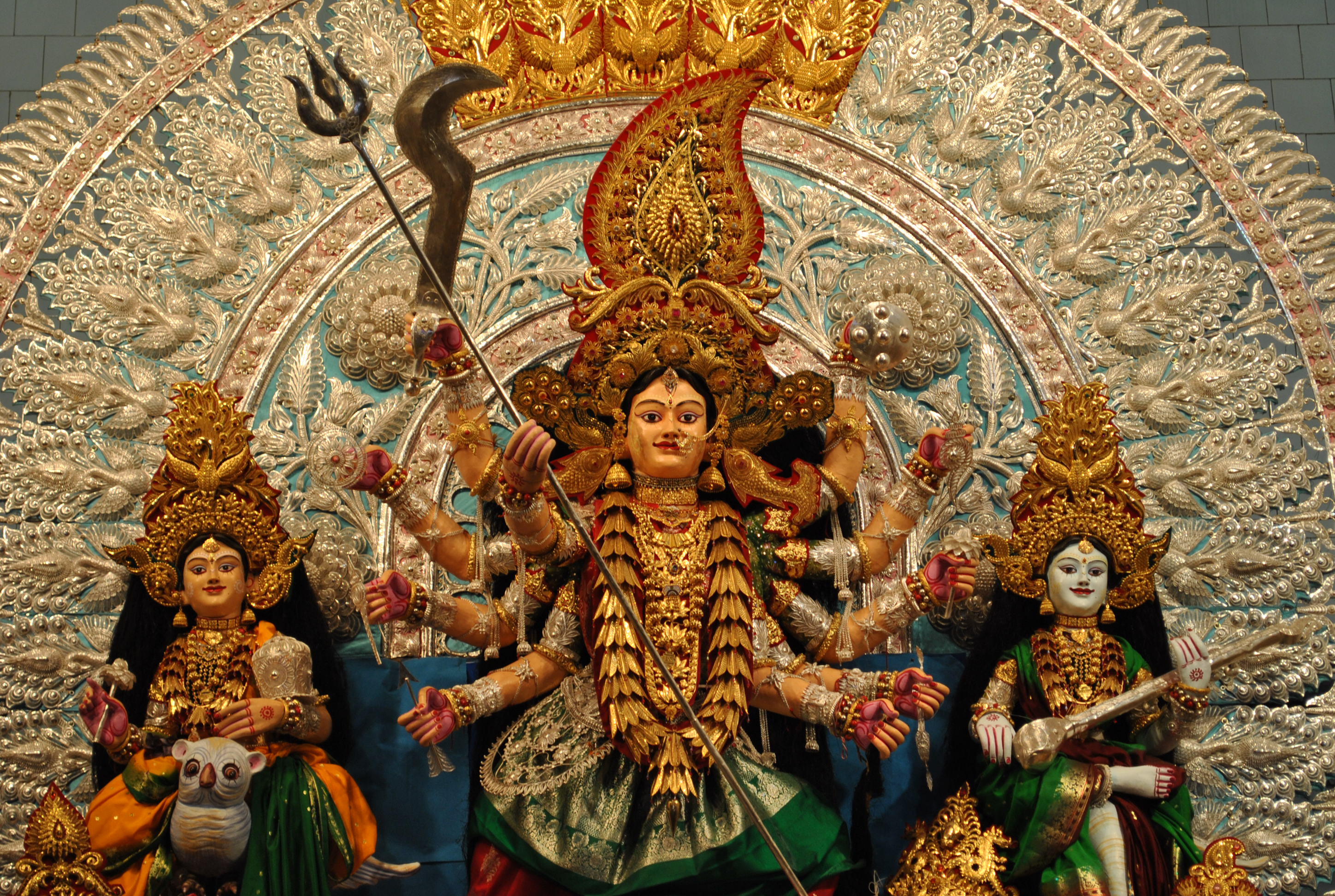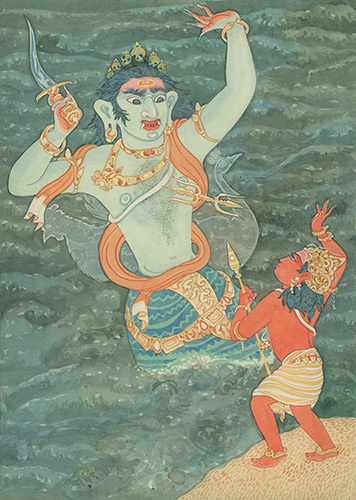|
Festivals Of Odisha
This article lists the traditional festivals and other cultural events in the Odisha region of India. Odisha celebrates 13 festivals in 12 months as the saying goes ''Bāra Māsare Tera Parba'' (). Major festivals This section lists festivals which are celebrated throughout Odisha. Autumn Durga Puja Durga Puja (ଦୁର୍ଗା ପୂଜା) occurs in the month of Ashvin (October and September). It is a 10-day-long festival. During the period, goddess Durga is worshipped in Shakti peethas or temporary shrines called pandals. Navratri refers to the first nine days of the festival. The nine forms of Durga, Navadurga, are worshipped during these nine days. Navratri begins on the Prathama (first bright day) Paksha (lunar fortnight) of the Ashvin month. It also marks the end of the rainy season according to the traditional calendar. The asura, Mahishasura, was killed by Durga on the tenth day according to Hindu mythology. The final five days are considered especially importan ... [...More Info...] [...Related Items...] OR: [Wikipedia] [Google] [Baidu] |
Vijayadashami
Vijayadashami (), more commonly known as Dassahra in Hindi, and also known as Dashāhra or Dashain in Bhojpuri, Maithili and Nepali, is a major Hindu festival celebrated every year at the end of Durga Puja and Navaratri, Navarahtri. It is observed on the tenth day of the month of Ashvin, the seventh in the Hindu Calendar, Hindu lunisolar calendar. The festival typically falls in the Gregorian calendar months of September and October, more specifically between 27 September and 26 October. It is celebrated on the tenth day of the waxing moon (Shukla Paksha) of the Ashvayuja month. Vijayadashami is observed for different reasons and celebrated differently in various parts of India and Nepal. In the southern, eastern, northeastern, and some northern states of India, Vijayadashami marks the end of Durga Puja, commemorating goddess Durga's victory against Mahishasura to restore and protect ''dharma''. In the northern, central, and western states, it marks the end of Ramlila and com ... [...More Info...] [...Related Items...] OR: [Wikipedia] [Google] [Baidu] |
Amavasya
Amāvásyā () is the lunar phase of the new moon in Sanskrit. Indian calendars use 30 lunar phases, called tithi in India. The dark moon tithi is when the Moon is within 12 degrees of the angular distance between the Sun and Moon before conjunction ( syzygy). The New Moon tithi (called Pratipada or Prathama) is the 12 angular degrees after syzygy. Amāvásyā is often translated as new moon since there is no standard term for the Moon before conjunction in English. Meaning of Amāvásyā In Sanskrit, "amā" means "together" and "vásya" means "to dwell" or "cohabit". It also means "na" +"ma"+"asya" meaning to "na" = "No, "ma"=Moon, "Asya"="There" in turn meaning to There is no Moon i.e., Moon is not visible. In the ''pūrṇimānta māna'' Hindu lunar calendar used in most parts of the Indian subcontinent, the lunar month starts on the day following the full moon or '' purnima'' and therefore Amāvásyā always falls in the middle of the month. However, in the '' am� ... [...More Info...] [...Related Items...] OR: [Wikipedia] [Google] [Baidu] |
Kartik (month)
Kārtika (,) is the eighth month of the Hindu calendar, which falls in October and November of the Gregorian calendar. In India's national civil calendar. In most Hindu calendars, Kartika begins with the transit of the Sun into Libra, beginning on 18 October and lasting until 15 November. In the Nepali calendar, which is also the country's official calendar, Kartika is the seventh month of the year, similar to the Maithili and Bengali calendars. In Bengal, Kartika marks the start of the dry season ( ''Hemôntô''). In the solar Tamil calendar, ''Kārttikai'' (கார்த்திகை, ) is the seventh month, corresponding to November/December in the Gregorian calendar. It begins when the sun enters the sign of Scorpio. Many festivals, such as Karthikai Deepam, are celebrated in this month. Etymology The name of the month is derived from the name of a star, Krittika (, ) nakshatra. Festivals Several major religious holidays take place in Kartika. These are as ... [...More Info...] [...Related Items...] OR: [Wikipedia] [Google] [Baidu] |
Kartikeya
Kartikeya (/Sanskrit phonology, kɑɾt̪ɪkejə/; ), also known as Skanda (Sanskrit phonology, /skən̪d̪ə/), Subrahmanya (/Sanskrit phonology, sʊbɾəɦməɲjə/, /ɕʊ-/), Shanmukha (Sanskrit phonology, /ɕɑnmʊkʰə/) and Murugan (/Sanskrit phonology, mʊɾʊgən/), is the Hinduism, Hindu List of war deities, god of war. He is generally described as the son of the deities Shiva and Parvati and the brother of Ganesha. Kartikeya has been an important deity in the Indian subcontinent since Vedic period, ancient times. Mentions of Skanda in the Sanskrit literature data back to fifth century BCE and the mythology relating to Kartikeya became widespread in North India around the second century BCE. Archaeological evidence from the first century CE and earlier shows an association of his iconography with Agni, the Hindu god of fire, indicating that Kartikeya was a significant deity in early Hinduism. He is hailed as the "favoured god of the Tamils", and the tutelary dei ... [...More Info...] [...Related Items...] OR: [Wikipedia] [Google] [Baidu] |
Kumar Purnima
Sharada Purnima (also known as Kumara Purnima, Kojagari Purnima, Navanna Purnima, Kojagrat Purnima or Kaumudi Purnima) is a religious festival celebrated on the full moon day of the Hindu lunar month of Ashvin (September to October), marking the end of the monsoon season. The full moon night is celebrated in different ways in various cultural regions across Indian subcontinent. On this day, many Hindu divine pairs like Radha Krishna, Shiva Parvati and Lakshmi Narayana are worshipped along with the Chandra, the moon deity, and are offered flowers and ''kheer'' (sweet dish made of rice and milk). Deities in temples are usually dressed in white color signifying the brightness of moon. Many people observe full day fasting on this night. Significance Sharad Purnima celebrates the night that the ''rāsalīlā'' (a circular dance) was performed between Krishna and the ''gopis'' (milkmaids) of Braj. To participate in this divine dance, Shiva took the form of ''Gopīśvara Mah� ... [...More Info...] [...Related Items...] OR: [Wikipedia] [Google] [Baidu] |
Holy River
Sacred waters are sacred natural sites characterized by tangible topographical land formations such as rivers, lakes, springs, reservoirs, and oceans, as opposed to holy water which is water elevated with the sacramental blessing of a cleric. These organic bodies of water have attained religious significance not from the modern alteration or blessing, but were sanctified through mythological or historical figures. Sacred waters have been exploited for cleansing, healing, initiations, and death rites. Ubiquitous and perpetual fixations with water occur across religious traditions. It tends to be a central element in the creations accounts of almost every culture with mythological, cosmological, and theological myths. In this way, many groups characterize water as "living water", or the "water of life". This means that it gives life and is the fundamental element from which life arises. Each religious or cultural group that feature waters as sacred substances tends to fa ... [...More Info...] [...Related Items...] OR: [Wikipedia] [Google] [Baidu] |
Kali
Kali (; , ), also called Kalika, is a major goddess in Hinduism, primarily associated with time, death and destruction. Kali is also connected with transcendental knowledge and is the first of the ten Mahavidyas, a group of goddesses who provide liberating knowledge. Of the numerous Hindu goddesses, Kali is held as the most famous. She is the preeminent deity in the Hindu tantric and the Kalikula worship traditions, and is a central figure in the goddess-centric sects of Hinduism as well as in Shaivism. Kali is chiefly worshipped as the Divine Mother, Mother of the Universe, and Divine feminine energy. The origins of Kali can be traced to the pre-Vedic and Vedic era goddess worship traditions in the Indian subcontinent. Etymologically, the term ''Kali'' refers to one who governs time or is black. The first major appearance of Kali in the Sanskrit literature was in the sixth-century CE text '' Devi Mahatmya''. Kali appears in many stories, with the most popular one bein ... [...More Info...] [...Related Items...] OR: [Wikipedia] [Google] [Baidu] |
Kendujhar
Kendujhar, also known as Keonjhar, is a town with municipality in Kendujhar District in the Indian state of Odisha. It is the administrative headquarters of the Kendujhar district, and it is one of the fifth scheduled areas of Odisha Odisha (), formerly Orissa (List of renamed places in India, the official name until 2011), is a States and union territories of India, state located in East India, Eastern India. It is the List of states and union territories of India by ar .... Climate Politics Mohan Charan Majhi of BJP is the current CM of Odisha who has been elected from Keonjhar assembly constituency. Majhi won assembly elections in both 2004 and 2000. Earlier MLAs from this seat were Jogendra Naik of BJP (1995), C. Majhi of JD (1990), Chhotaray Majhi of JNP (1985), Jogendra Naik of INC(I) in 1980 and Kumar Majhi of JNP (1977). Present MP from Keonjhar (Lok Sabha constituency) is Ananta Nayak of BJP. Gallery Some images of keonjhar. File:KEONJHAR town a ... [...More Info...] [...Related Items...] OR: [Wikipedia] [Google] [Baidu] |
Durga Puja In Odisha
Durga Puja (ISO: , ), also known as Durgotsava or Shaaradotsava, is an annual festival originating in the Indian subcontinent which pays homage to the Hindu goddess Durga, and is also celebrated because of Durga's victory over Mahishasura. It is the biggest festival of Bengali Hindus and the Indian state of West Bengal. Durga Puja as celebrated in Kolkata, West Bengal's capital city, was inscribed on the intangible cultural heritage list of UNESCO in December 2021. In addition to West Bengal, Hindu Bengalis are native to Bangladesh and Indian state of Tripura, Assam (Barak Valley), Jharkhand and Bihar (Kosi-Seemanchal); Therefore, Durga Puja is performed with great devotion in these places as well. The festival is observed in the Indian calendar in the month of Ashvin, which corresponds to September–October in the Gregorian calendar. Durga Puja is a ten-day festival, of which the last five are of the most significance. Even though Durga Puja and Navaratri are observe ... [...More Info...] [...Related Items...] OR: [Wikipedia] [Google] [Baidu] |





